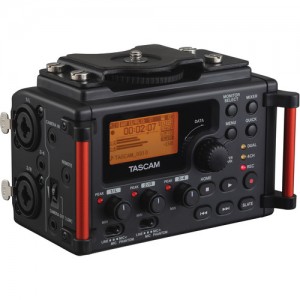One of the most important… and useful… sayings I’ve ever heard, and which I’ve incorporated into my workflow as a filmmaker is this: ninety percent of good video is good audio. From my earliest days in television news and all the way through to my current documentary, this is valuable advice that I keep in mind every day during production and editing. It makes a lot of sense when you consider the effect of your shooting and editing on the people who will ultimately be taking in your work.
Most of us multitask, not so much as a matter of choice, but by necessity. With many obligations and multiple streams of information surrounding us, the most likeley scenario is that a potential viewer is going to be tempted to view our work based on something they hear rather than something they see. Audio cues us to look at the video, whether it’s a sound pop from the telebision while we’re preparing dinner in the kitchen, a car horn down the block or an email alert while we’re typing, our ears are often better judges about what merits our attention than our eyes. This can be difficult when using tools like a GoPro or a DSLR as part of a production crayon box.
Tascam to the rescue.

I’ve been using Tascam, in one form or another, for most of my career… from reel to reel decks in the radio station where I got my start as a reporter to my shoot on Auckland Harbour this past April. The company is finding a niche in adding superb production audio capabilities to the smallest cameras that can shoot broadcast and prosumer quality video, but for which space still results in subpar audio.
We used a DR-60 in conjunction with a Canon DSLR. Truth in advertising… there are much more fleshed out reviews of the DR60, like this one I particularly liked, but I can ell you from my perch as a director thatI’m enjoying having this arrow in the quiver. It’s a rugged little workhorse that accompanied us through the Australian outback and across New Zealand’s Cook Strait. The DR-60’s design fits flush underneath most DSLR units, and also works well if you’re rigging it. It’s profession has XLR connections and a lot of control over the shape of your sound. It can also be synced live onto the audio portion of the recording on many DSLR cameras, overriding the onboard microphone like the Canon we were using. Otherwise, you may need to use a program like Pluraleyes
to sync it in post. But you can get a lot of audio out of this little guy. A 32GB SD card lasted all day with room to spare. I would warn you that it is a battery hog, and it uses a lot of them. Invest in many rechargeables, but make sure they are brands and chemical types that are compatible with this unit. The Instructions go into painstaking detail to warn you about what kind of rechargeable batteris not to use with this unit. You can damage the unit with the wrong kind. But it may be worth investing in them, because you can go through six AA batteries in less than two hours of constant use.
Here’s a link to the features and specs for the Tascam unit we used.
Good luck and happy shooting!

One thought on “Good Audio for Great Video: Turning to Tascam”